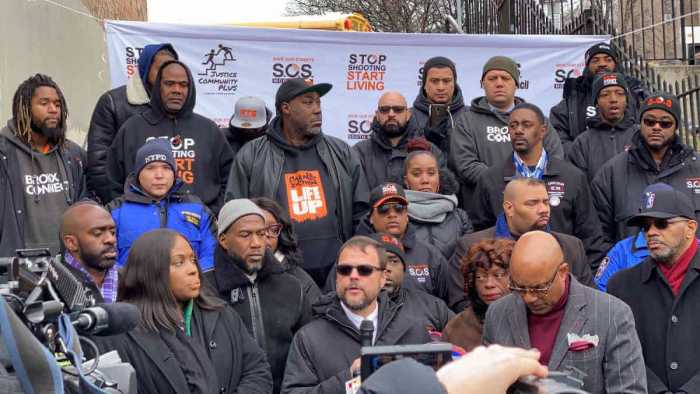Philip Seymour Hoffman’s end was no anomaly. Overdose deaths have risen dramatically in New York City and the nation. He is one among thousands.
The fact that he was the object of critical accolades was also not unusual. Hoffman was a high-performing heroin user — Charlie Parker, Billie Holiday, John Belushi, and Robert Downey, Jr., are other celebrities who spring to mind in that regard. Famous yes, but perhaps more to the point, they have all been acclaimed for their exceptional artistry.
Hoffman’s death reminds us that drug use cannot be attributed solely to poverty. It’s not just a Bronx problem. It may affect homeless members of the transgender community, but it also has its impact on affluent gay white men. In fact, the rate of drug poisoning deaths involving heroin among white New Yorkers (8.9 per 100,000) in 2012 was higher than among Hispanics, at 6.2, or blacks, at 4.6. Well-to-do neighborhoods in the city experienced a 300 percent increase in heroin deaths between 2010 and 2012. It is a racist myth to say that the black and brown are plagued by drug use, which in turn drives crime. People — including criminals — like their drugs, regardless of skin color or socioeconomic status.
Stigmatizing of users, crackdown on prescription pain meds aggravate a problem for which progress is possible
Nor is it unusual that Hoffman’s death is used to reinforce the misleading legend that heroin causes misery. It is likely that Hoffman took drugs seeking relief from some form of misery in his life. You will seldom read a word about the pleasure Hoffman might have found in heroin or the attractions of opioid use generally — an allure that persists in the face of government sanctions and social hostility.
Ignoring the pleasures people find in taking drugs hampers drug education. The relentless focus on the harms doesn’t really help the group that matters the most — those individuals who experience a revelation when they use drugs, a moment that tells them this is something they want in their lives. The exclusive focus on harm makes it harder for users to relate those warnings to their own experiences and, in turn, to devise strategies for coping. And it makes it harder for the rest of us to understand the pleasure these individuals experience and to develop any feeling of solidarity with them.
For health workers, Hoffman’s death offers a chance to talk about Naloxone. That drug is to overdoses what a defibrillator is to heart attacks. Take it and in a matter of minutes breathing is restored. Opiate poisoning leaves a person incapacitated, so typically a bystander must inject the antidote. An ingenious innovation now permits injection without using needles. A piece of plastic with a foam tip, attached to a syringe, fits into the nose. Injecting half the solution into each nostril allows normal breathing to resume within two to five minutes.
With training anyone can use Naloxone, and Dr. Sharon Stancliff, a physician at the Harm Reduction Coalition, believes the treatment should become more easily accessible. That’s the goal of new legislation in Albany that would allow people who might observe an overdose to have Naloxone at the ready and be trained in its use. According to a memorandum prepared by the bill’s legislative sponsors, the measure would make Naloxone available to “a family member, friend, or other person in a position to assist a person experiencing an opioid-related overdose and allow them to store and dispense” it. People close to drug users are in the best position to be on hand when an antidote needs to be administered.
Unlike the uncertainty that surrounds so many efforts at drug law reform, it’s a good bet this bill will pass. Even before Hoffman’s death brought heroin overdose foursquare before the public, Republicans and Democrats had reached agreement. “Strengthening access is the best tool we have to prevent overdose deaths,” according to Bronx Democratic Assemblyman Jeffrey Dinowitz, the measure’s sponsor. Dinowitz is optimistic; the Senate sponsor is a Republican and the chair of the Health Committee, Long Island’s Kemp Hannon.
But the bill is not a panacea; barriers remain. Methadone and buprenorphine are highly regarded substitutes for heroin, but patients using them are typically drug-tested. If other drugs are found, they might be forced to leave the treatment program, an irrational response similar to a weight control program forcing a person out for going off their diet. In general, the obsessive search for drug abstinence creates difficulties for programs offering services to users — and a person cut off from a heroin substitute is likely to become an injecting user once more. The use of drug testing also generates suspicion between the program and its clients, making it difficult for them to take charge of their health. Program members typically want to be non-judgmental but the rules may force them in the other direction.
Another significant factor in the current heroin picture is the recent crackdown on prescriptions of Oxycontin and other drugs containing opioids. From 2006 until 2010, overdose deaths declined an average of 22 percent a year, but after 2010 a dramatic reversal occurred. By 2012, deaths had risen from 541 to 730. By then, Staten Island had become the center of the Oxycontin epidemic, with the highest rate of overdoses in the five boroughs. Education meetings in the borough were welcomed enthusiastically, but the level of ignorance, while understandable, was scary. Audience members had no idea that Oxy was related to heroin. That a “good drug” prescribed by a doctor shares traits similar to those of a “bad” drug like heroin was a revelation.
Supplies of such prescriptions have since been restricted. This may reduce overdose deaths from Oxycontin, but it also means users will switch to heroin, use of which was already on the rise when the prescription curbs took effect.
Shutting off access to Oxycontin no longer seems an obvious solution. A drug that is created in an underworld where potency varies radically and is injected by users replaced a pharmaceutical pill that delivers a uniform dose. And, going from pills to injection is a social initiation into a community of hard-core drug users. The newbie has to identify suppliers and then be taught how to inject. According to Joyce Rivera, the executive director of St. Ann’s Corner of Harm Reduction in the Bronx, this process changes a person’s social life and increases their health risks.
The displacement of prescription opioids by heroin may be undercutting the drug education efforts and outreach in Staten Island. An effort that was directed at pill users must now be adapted for needle users. Staten Island is already the part of the city where needle exchange programs are least available.
Though trading reduced use of opioid prescriptions for increases in needle intake of drugs has little to recommend it, greater heroin use is something that must now be confronted. St. Ann’s (where, full disclosure, I formerly served as the chair of the board of directors) has drafted a report called a drug users’ need assessment that found injecting users in the Bronx no longer have access to abandoned buildings. With economic conditions improving in the borough, users are once again shooting up in public — in hallways, alleys, and parks. The conditions are unsanitary, infections are up, and a hazard is created from needles being discarded in public places.
St. Ann’s is asking the New York State AIDS Institute to support safer injecting facilities (SIF), rooms with a nurse present where a user, after purchasing their drugs in the illegal market, can inject in a peaceful and sanitary environment. Rather than being rushed, a shooter can use the alcohol wipes and clean syringes that reduce infection. SIFs are entry points for education and assistance in helping drug users manage their lives. More than 90 SIFs are in place in Europe, Canada, and Australia, where they are a part of the overall repertoire of harm reduction options, as discussed in a publication by the European Monitoring Centre for Drugs and Drug Abuse available at emcdda.europa.eu. According to the Centre, “the facilities reach their target population and provide immediate improvements through better hygiene and safety conditions for injectors.”
“Immediate improvement.” How often can we say that about a drug program?
No one is saying Hoffman would have been saved, but if somebody in his situation had the opportunity of using such a facility, an overdose might turn out to be an incident not a fatality.


































